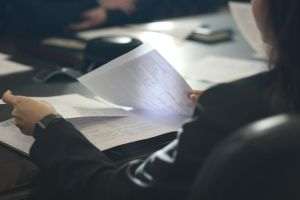In a concrete world, faith should meet certain criteria, measurable in meters and kilograms. The latest proof that faith can indeed be measured and evaluated, has just received the blessing of the church and is located in the pass of Tihuţa, in a superb natural setting. To make sure the prayers of the believers don"t get lost in the green valleys of the region, a 25 m high cross was built on a 6 m high concrete platform, weighing 16.2 tons. Where there"s iron and concrete, neon lights can"t be far behind, meaning the Christian symbol is also visible at night.
Priceless though it may be on a spiritual level, faith costs quite a lot in the real world. The entire project cost the Council of the County of Bistriţa-Năsăud no less than 1.34 million lei, meaning more than 310,000 Euros. That"s quite a lot of money to spend at a time when the crisis is in full swing.
Two calls for tenders were made for the construction of this project, which was designed as early back as 2006, and both were won by the company called Comlorela of Beclean. Bless the Lord!
Since comparisons are all the rage nowadays, the monument of the pass of Tihuţa is now being compared to the Cross dedicated to Romania"s heroes of the Caraiman peak, that Queen Mary and King Ferdinand Ist had erected to honor the heroes of WWI.
Leaving something behind for posterity is necessary, if Stephen the Great, Vasile Lupu, Constantin Brâncoveanu did it, why shouldn"t the current politicians do it (they are after all the rulers of the land). At the foundation of the monument, which was blessed by a group of priests, led by His Holiness Bartolomeu Anania, was buried a document which commemorates all the people involved in the construction of the cross, starting with the president of the County Council Liviu Rusu, and with PD-L deputy, Ioan Oltean. After all, even Octav Cozmâncă lies painted among saints in the church of Cândeşti (Botoşani), and Ilie Morega lies on the right side of saint Ilie in the holy church of Micescu (Gorj). From a technical point of view, in times of duress, a document that"s buried has better odds of enduring than a mural painting. For instance, Gigi Becali was erased from the wall near the entrance of the church of Maglavit, where he was painted next to former medieval ruler Petrache Lupul.
This whole story also has some tourist attraction tone to it. The cross is located in the Mountains of Bârgău, on the boundary of the counties of Bistriţa-Năsăud and Suceava, as the area is visited by many tourists, drawn by the myth of count Dracula.
Talk about ironic: going to look for Dracula and ending up in front of a huge cross!
























































